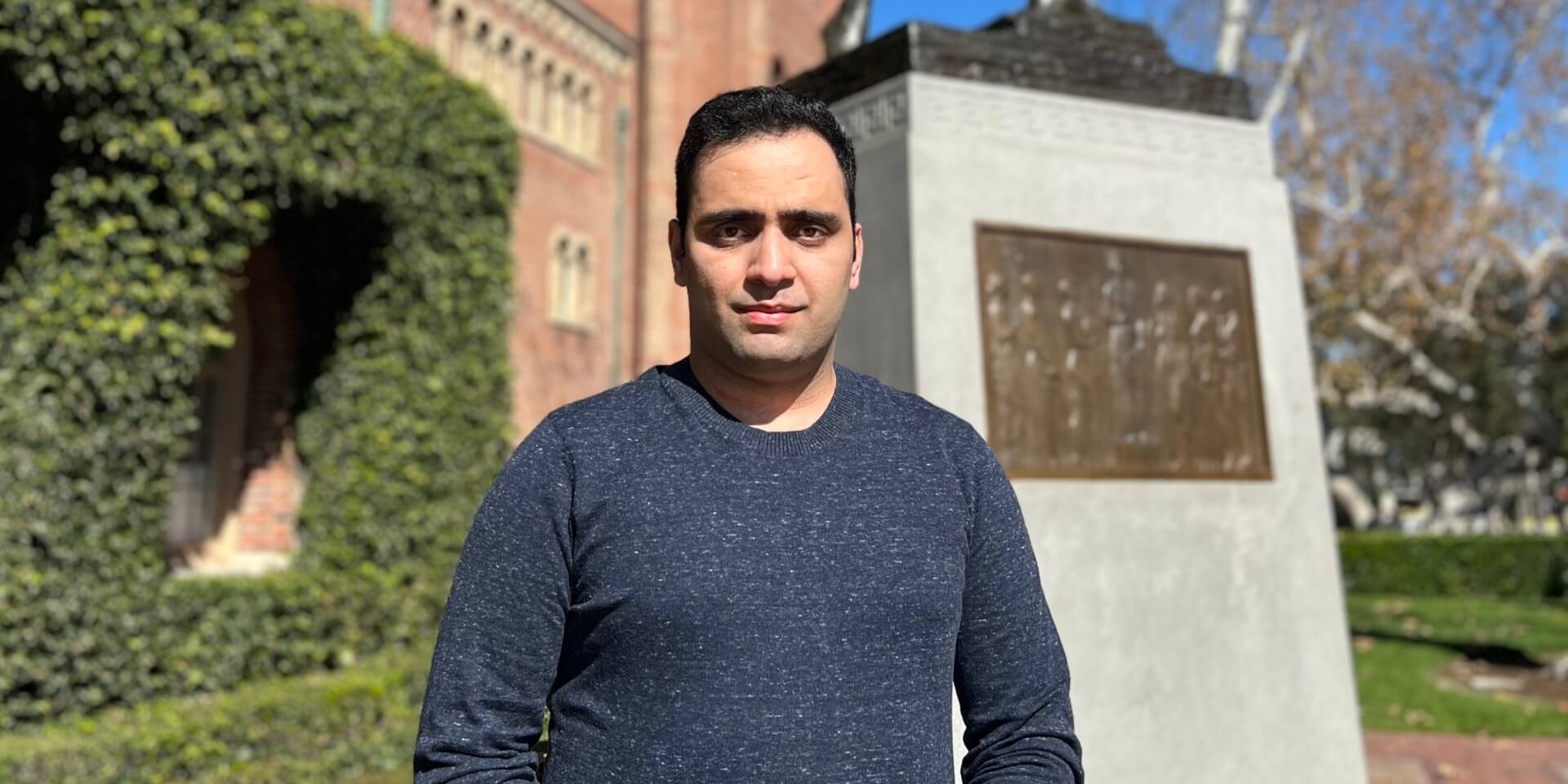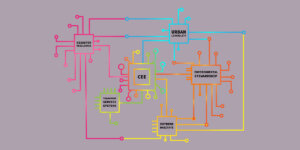
Ph.D. student Pooria Namyar (USC Photo/Rania Soetirto)
Pooria Namyar, the Electrical and Computer Engineering Ph.D. candidate, is one of the 41 promising young researchers to be named MLCommons Rising Stars for their work on machine learning.
MLCommons, a self-described artificial intelligence engineering consortium, was created to foster collaboration to improve AI/ML systems. This is the second year the group has identified a cohort of Rising Stars. The researchers, who come from 33 global institutions, “have demonstrated excellence in Machine Learning and Systems research and stand out for their current and future contributions and potential.”
Namyar’s research intersects theory, systems and ML. His recent work focuses on designing algorithms and optimizations to enhance the performance and availability of large-scale cloud networks. Recently USC Viterbi wrote about Namyar’s work with Microsoft: Together they developed Soroush (named after a messenger angel in Persian mythology), a set of optimization-based methods to create a fairer and faster allocation process within the cloud ecosystem.
“Being named a Rising Star in ML and Systems is an incredible honor,” Namyar said. “This award acknowledges my ongoing research on developing reliable, high-performance machine-learning systems. It builds upon my broader research in designing tools to analyze and enhance the performance and availability of large-scale networks and systems. Receiving this award motivates me to further develop these tools and contribute to building the next generation of robust and reliable machine learning systems.
“I am also extremely grateful to my adviser, Professor Ramesh Govindan, my mentors, and collaborators for their constant support and guidance.”
Govindan said Namyar has made important contributions in the area of computer science heuristics, or shortcuts for solving problems. “Often you need things done quickly, and sometimes heuristics are OK, because they give you good average case performance,” Govindan said. “So most of the time they work well. But we really do not understand when they fail, how badly they fail, and under what inputs.” Namyar developed a set of tools that can determine when a heuristic performs poorly.
Building tools to help us understand under what conditions heuristics break is essential, Govindan said. “If you have a system, like a car, the users and regulatory agencies tend to notice failures. These tools will help with finding and avoiding those cases.”
Systems that use machine learning models can also perform poorly, and understanding when this happens is essential. Researchers have explored ways to fool neural networks and machine learning models in isolation. However, machine learning models typically interact with other components in the system and all of these together determine the system’s overall performance. For the MLCommons award, Namyar proposed building tools that can analyze the performance of such systems holistically instead of focusing solely on machine learning models and can provide guarantees about the system-wide performance. He will present his preliminary work on this topic, “End-to-End Performance Analysis of Learning-enabled Systems,” at HotNets 2024 in November.
Published on October 3rd, 2024
Last updated on October 3rd, 2024












